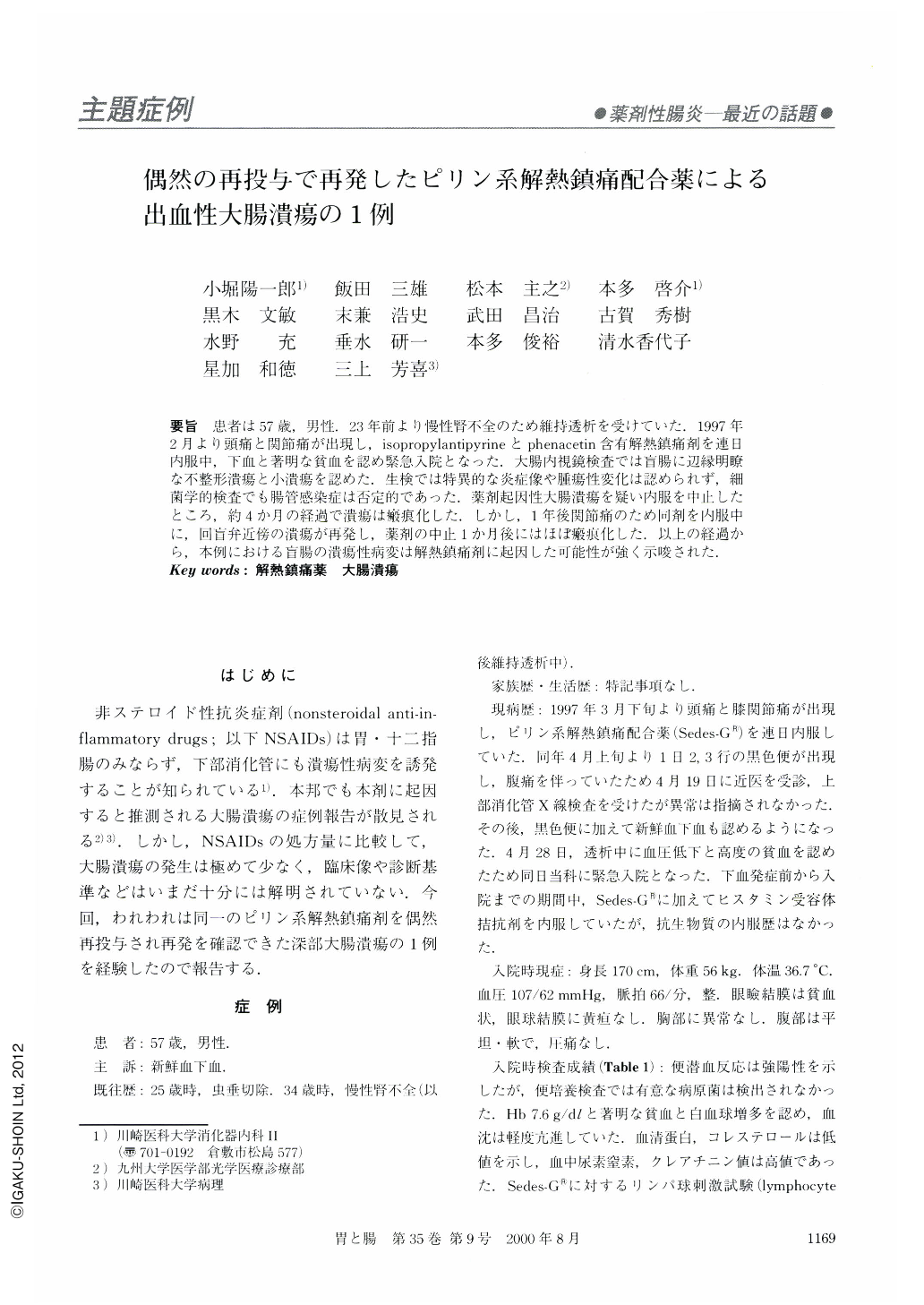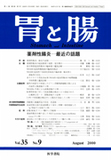Japanese
English
- 有料閲覧
- Abstract 文献概要
- 1ページ目 Look Inside
- サイト内被引用 Cited by
要旨 患者は57歳,男性.23年前より慢性腎不全のため維持透析を受けていた.1997年2月より頭痛と関節痛が出現し,isopropylantipyrineとphenacetin含有解熱鎮痛剤を連日内服中,下血と著明な貧血を認め緊急入院となった.大腸内視鏡検査では盲腸に辺縁明瞭な不整形潰瘍と小潰瘍を認めた.生検では特異的な炎症像や腫瘍性変化は認められず,細菌学的検査でも腸管感染症は否定的であった.薬剤起因性大腸潰瘍を疑い内服を中止したところ,約4か月の経過で潰瘍は瘢痕化した.しかし,1年後関節痛のため同剤を内服中に,回盲弁近傍の潰瘍が再発し,薬剤の中止1か月後にはほぼ瘢痕化した.以上の経過から,本例における盲腸の潰瘍性病変は解熱鎮痛剤に起因した可能性が強く示唆された.
A 57-year-old man with chronic renal failure was admitted to our hospital, because of hematochezia and severe anemia. He had been taking nonsteroidal anti-inflammatory drugs (NSAIDs) for headache and arthralgia prior to the onset of hematochezia. Colonoscopy revealed an irregularly shaped, discrete ulcer in the cecum. Histology of the biopsy specimens revealed nonspecific inflammation, predominantly with neutrophilic infiltration. Culture of the feces and the biopsy specimen failed to identify any pathogenic micro-organism. After the discontinuance of the NSAID, the cecal ulcer healed. One year later, however, his cecal ulcer recurred after the intake of the same type of NSAID. The ulcer again improved after the discontinuance of the drug. The clinical course of the patient strongly suggests that the cecal ulcer was induced by the NSAIDs.

Copyright © 2000, Igaku-Shoin Ltd. All rights reserved.


